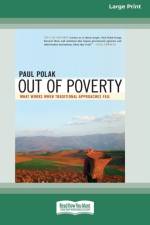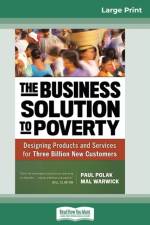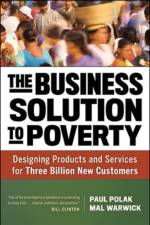- Designing Products and Services for Three Billion New Customers (16pt Large Print Edition)
av Mal Warwick & Paul Polak
515,-
One of the most hopeful propositions to come along in a long time. Paul Polak and Mal Warwick's approach is original, ambitious, and practical and it just may be the key to reducing the number of people in poverty on a very large scale. They propose to harness the power of free enterprise to begin meeting the most basic needs of the poor while making a profit. Though market - based approaches aren't new, Polak and Warwick lay out a practical and systematic way to work on a global scale, transforming the lives of hundreds of millions of poor people. (President Bill Clinton). The fact is none of the well - meaning anti - poverty initiatives to date have achieved much - there are 2.7 billion people today living on 2 dollars a day or less, more than the entire population of the world in 1950. Paul Polak and Mal Warwick argue that the way to help these people is not to view them as victims or as charity cases, but as customers whose needs the market can serve effectively and profitably, without exploitation. In fact, Polak has been doing it for years. The key is to design products and services explicitly for this market - not cheapened versions of products designed for more affluent markets - an approach called Zero - Based Design. Polak and Warwick spell out, step by step, the guidelines and principles of this approach, and show how it has already been able to supply the very poor with clean drinking water, electricity, irrigation, housing, education, healthcare, and other necessities at a fraction of the usual cost and at profit margins comparable to the more developed world. This approach can be scaled up to reach a virtually untouched market of millions or even billions - this is an extraordinary opportunity for nimble entrepreneurs, investors, and corporate executives that will result in tremendous good for the world's poorest people.



